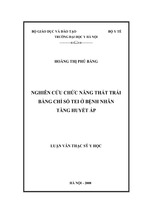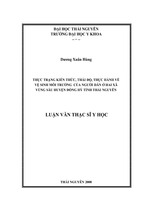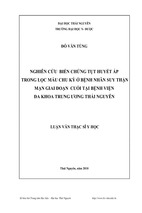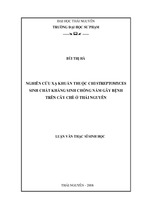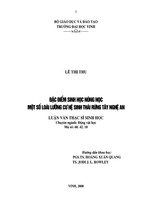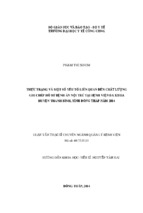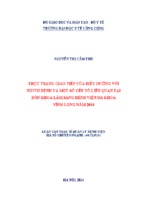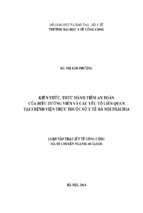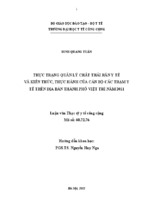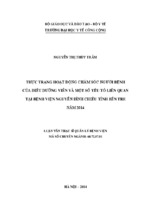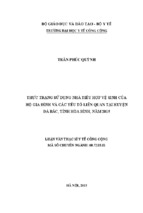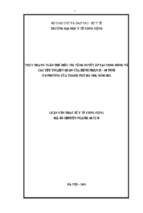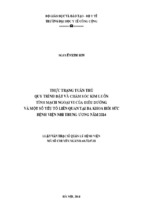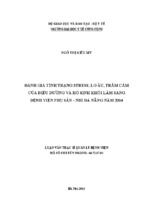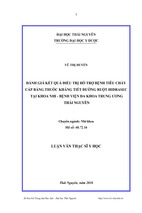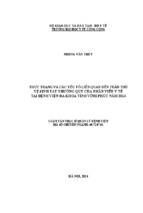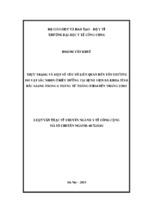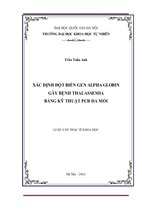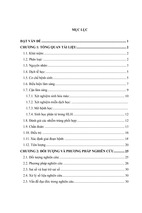Understanding Host Community Attitudes towards
Tourism and Resident-Tourist Interaction:
A Socio-Behavioural Study of Melbourne’s
Urban-Rural Fringe
A thesis submitted in fulfillment of the requirements for the degree of
Doctor of Philosophy
Jiaying Zhang
School of Management
Business Portfolio
RMIT University
Melbourne, Victoria, Australia
February 2008
Declaration
I certify that except where due acknowledgement has been made, the work is that of the
author alone; the work has not been submitted previously, in whole or in part, to qualify for
any other academic award; the content of the thesis is the result of work which has been
carried out since the official commencement date of the approved research program; and,
any editorial work, paid or unpaid, carried out by a third party is acknowledged.
Jiaying Zhang
Date:
ii
Acknowledgements
The completion of this thesis is possible through the assistance, guidance and encouragement
of a number of people to whom I would like to extend my sincere thanks from the bottom of
my heart.
First, I must express my profound and heartful appreciation to my senior supervisor Dr.
Robert Inbakaran and associate supervisor Dr. Mervyn Jackson for their invaluable advice,
professional guidance, continuous encouragement and numerous inputs throughout my whole
candidature. I truly can not imagine accomplishing this work without their strong support.
I also wish to express my sincere thanks to Cindy Ferguson – tourism development officer of
Murrindindi Shire Council, Grant Hawkins – tourism officer of Wyndham City Council, Mr.
Peter Hayes and Mr. Robert Sztormwski for their considerable assistances in sample
stratification and data collection, and to Ms. Pixi Silverman for her editorial work.
My sincere thanks also go to the Australian Government for its enormous support through the
grant of the Australian Postgraduate Award to me.
In addition, I would like to thank RMIT University, Business Portfolio, School of
Management, Research Development Unit and Ms. Prue Lamont for their support during my
candidature. Special thanks go to my peer research students in the research facility for their
friendship, sharing of knowledge and cheerful words.
Finally, I am very grateful to my parents, my sisters and brothers for their love, mental
support and motivation throughout the years. Especially, I wish that my grandmother in
heaven could feel my deepest thanks and memories.
iii
Table of Contents
Declaration..........................................................................................................................ii
Acknowledgements............................................................................................................iii
Table of contents................................................................................................................iv
List of publications.............................................................................................................x
Glossary of acronyms........................................................................................................xi
List of tables.....................................................................................................................xiii
List of figures....................................................................................................................xv
Title......................................................................................................................................1
Abstract...............................................................................................................................2
Chapter 1
Introduction
1.1 Background and overview of the present study .......................................................5
1.2 Aim and objectives...................................................................................................7
1.3 Research questions ...................................................................................................8
1.4 Significance of the present study .............................................................................9
1.5 Research methodology ...........................................................................................11
1.6 Study area...............................................................................................................13
1.7 Thesis structure ......................................................................................................14
Chapter 2
Literature review
2.1 Introduction ............................................................................................................16
iv
2.2 Community attitudes towards tourism ...................................................................16
2.2.1 Theoretical foundations in the research field.................................................... 17
2.2.2 Impacts of tourism perceived by community residents .................................. 20
2.2.2.1 Economic impacts of the tourism industry..................................................20
2.2.2.2 Social and cultural impacts of tourism ........................................................23
2.2.3 Major influential factors on host reisidents’ attitudes toward tourism ............ 24
2.2.3.1 Frequently examined factors .......................................................................25
2.2.3.2 Research gaps and deficiencies ...................................................................27
2.2.3.2.1 Orthogonal dimensions of attitudes towards tourism ..........................27
2.2.3.2.2 Influence of personality on attitudes ...................................................28
2.2.3.2.3 Urban-rural fringe................................................................................28
2.2.4 Community segments........................................................................................ 29
2.3 Host-guest interactive behaviour............................................................................32
2.4 The TRA,TPB and TIB ..........................................................................................35
2.4.1 The TRA and TPB ........................................................................................... 35
2.4.2 The TIB ........................................................................................................... 39
2.5 The five factor model of personality ......................................................................42
2.6 Research hypotheses ..............................................................................................43
2.7 Summary ................................................................................................................44
Chapter 3
Methodology
3.1 Introduction ............................................................................................................45
3.2 Research approach: Quantitative VS qualitative ..................................................45
3.3 Research instrument ...............................................................................................46
v
3.4 Pilot test..................................................................................................................48
3.5 Sampling design and data collection......................................................................49
3.6 Method of data analysis..........................................................................................50
3.6.1 Level of measurement of variables ................................................................... 51
3.6.2 Statistical analysis method ................................................................................ 52
3.7 Model development and measurement of model construct....................................54
3.7.1 Model development procedures......................................................................... 54
3.7.2 Measurement of the model constructs .............................................................. 55
3.7.2.1 Measurement of behaviour and intention ..................................................56
3.7.2.2 Measurement of the model constructs belonging to the TRA and TPB......57
3.7.2.3 Measurement of the model constructs unique to the TIB............................58
3.7.3 Measurement of personality traits..................................................................... 60
3.8 Summary ................................................................................................................61
Chapter 4
Analyses and Results
4.1 Introduction ............................................................................................................62
4.2 Sample profile ........................................................................................................62
4.2.1 Demographic characteristics of the respondents............................................... 62
4.2.2 Residential status of the respondents ................................................................ 64
4.3 Community attitudes towards tourism ...................................................................65
4.3.1 Overall community attitudes towards tourism .................................................. 65
4.3.2 Attitude dimensions .......................................................................................... 66
4.3.3 Influential factors on attitudes........................................................................... 69
4.3.3.1 Socio-demographics ....................................................................................69
vi
4.3.3.2 Income dependence on tourism ...................................................................74
4.3.3.3 Usage of local recreation resources .............................................................75
4.3.3.4 Voluntary participation in local tourism activities ......................................76
4.3.3.5 Personality ...................................................................................................76
4.4 Segmentation of community residents ...................................................................79
4.4.1 Clustering base, procedure and results.............................................................. 79
4.4.2 Cluster profiles.................................................................................................. 81
4.4.3 Between-cluster differences on attitudes towards tourism ............................... 84
4.4.4 Between-cluster differences on tourism related behaviours ............................. 85
4.5 Evaluation of the TRA, TPB and TIB in predicting resident-tourist
interactive behaviour ..............................................................................................87
4.5.1 Test of assumptions associated with multiple regression ................................. 87
4.5.2 Evaluation of the TRA model ........................................................................... 89
4.5.3 Evaluation of the TPB model............................................................................ 90
4.5.4 Evaluation of the TIB model............................................................................. 92
4.5.5 Comparisons between the TRA, TPB and TIB model...................................... 95
4.6 Developing a new model predicting resident-tourist interactive behaviour ..........95
4.6.1 Model development and validity ...................................................................... 96
4.6.2 Examination of the effects of moderating factors............................................. 97
4.6.2.1 Moderating effects of gender.......................................................................98
4.6.2.2 Moderating effects of age ............................................................................98
4.6.2.3 Moderating effects of personality traits.......................................................99
4.6.2.4 Moderating effects of attitudes towards general tourism ..........................100
4.7 Summary ..............................................................................................................101
vii
Chapter 5
Interpretation and Discussion
5.1 Introduction ..........................................................................................................103
5.2 Community attitudes towards tourism .................................................................103
5.3 Effects of intrinsic factors on attitudes.................................................................107
5.3.1 Orthogonal dimensions of community attitudes towards tourism .................. 107
5.3.2 Intrinsic variables only affecting one orthogonal dimension of attitudes....... 108
5.3.3 Influential variables affecting both dimensions of attitudes ........................... 111
5.3.4 Non-influential intrinsic variables .................................................................. 115
5.4 Community segmentation ....................................................................................116
5.4.1 Socio-demographic segmentation approach ................................................... 116
5.4.2 Cluster profiles in terms of attitudes towards tourism .................................... 118
5.4.2.1 Profiles for residents perceiving the least benefits and the most costs ....118
5.4.2.2 Profiles for residents perceiving the most benefits and the least costs......120
5.4.2.3 Profiles for residents perceiving moderate benefits and moderate costs...122
5.5 Modelling resident-tourist interactive behaviour .................................................127
5.5.1 Theoretical foundation of the model............................................................... 127
5.5.2 Validity and reliability .................................................................................... 128
5.5.3 Model constructs and interrelationships ......................................................... 129
5.5.3.1 Proximal predictors for resident-tourist interactive behaviour ................129
5.5.3.2 Distal predictors for resident-tourist interactive behaviour.......................130
5.5.4 Effect of external moderators.......................................................................... 132
5.5.5 Implications for tourism authorities................................................................ 135
5.6 Summary ..............................................................................................................137
viii
Chapter 6
Conclusions, Limitations and Implications
6.1 Introduction ..........................................................................................................138
6.2 Conclusions ..........................................................................................................138
6.3 Limitations of the present study...........................................................................140
6.4 Implications for future research ...........................................................................141
6.5 Summary ..............................................................................................................143
References.......................................................................................................................144
Appendix A
Invitation Letter..................................................................................157
Appendix B
Questionnaire......................................................................................159
ix
List of Publications
Zhang, J, Inbakaran, RJ & Jackson, M (2006), ‘Understanding community attitudes towards
tourism and host-guest interaction in the urban-rural border region’. Tourism Geographies,
vol. 8, no. 2, pp. 182-204
Zhang, J, Inbakaran, RJ & Jackson, M (2006), ‘Regional community attitudes towards
tourism: indemnification of community clusters in Murrindindi Shire, Victoria’. Proceedings
of the 16th CAUTHE Annual Conference. Victoria University, Melbourne, Australia. 6-9
February 2006. ISBN: 0-9750585-1-7
Inbakaran, RJ, Jackson, M & Zhang J (2007), ‘Application of the theory of planned
behaviour to predict pro-tourism attitude in differing rural community segments inside
regional Victoria, Australia: a hierarchical regression analysis’. Journal of Hospitality and
Tourism, vol. 5, no. 1, pp. 51-66.
Inbakaran, RJ, Jackson, M & Zhang, J (2006), ‘Understanding resident attitudes and
pro-tourist behaviour towards regional tourism development: application of the theory of
planned behaviour’. Proceedings of the International Conference on Natural Hazards and
Disasters: Local to Global Perspective. Sri Krishnadevaraya University, Andhra Pradesh,
India. November 2006. ISSN: 0973-5062
Inbakaran, RJ, Jackson, M & Zhang, J (2006), ‘Sensible tourism in sensitive regions: a case
study analysis’. Proceedings of the International Conference on Natural Hazards and
Disasters: Local to Global Perspective. Sri Krishnadevaraya University, Andhra Pradesh,
India. November 2006. ISSN: 0973-5062
Inbakaran, RJ, Jackson, M, Gao, H & Zhang, J (2005), ‘Understanding the travel
perspectives of a border tourism region: a cluster analysis of potential travellers in Shandong’.
Proceedings of the International conference on Border Tourism and Community Development,
Xishuangbanna, China July 6-9, 2005. ISBN: 7-5032-3017-7
Jackson, M, Inbakaran, RJ, Gao, H & Zhang, J (2005), ‘A hidden influence of border tourism:
a psychographic segmentation study of potential outbound tourists’. Proceedings of the
International conference on Border Tourism and Community Development, Xishuangbanna,
China July 6-9, 2005. ISBN: 7-5032-3017-7
x
Glossary of Acronyms
AA = Affective Attitude
ANOVA = Analysis of Variance
DF = Degree of Freedom
FC = Facilitating Conditions
FFM = Five Factor Model of personality
GDP = Gross Domestic Products
GSP = Gross State Products
IA = Instrumental Attitude
NB = Normative Beliefs
OCEAN = Openness to experience, Conscientiousness, Extraversion, Agreeableness and
Neuroticism (the five personality traits defined by the FFM)
PBC = Perceived Behavioural Control
PC = Perceived Consequences
PNB = Personal Normative Beliefs
PSN = Perceived Social Norms
RB = Role Beliefs
R-T = Resident-Tourist
SARS = Severe Acute Respiratory Syndrome
SET = Social Exchange Theory
SI = Self Identity
xi
SN = Subjective Norm
SPSS = Statistical Package for the Social Sciences
TAFE = Technical and Further Education
TIB = Theory of Interpersonal Behaviour
TPB = Theory of Planned Behaviour
TRA = Theory of Reasoned Action
TSA = Tourism Satellite Account
UNWTO = World Tourism Organization of the United Nations. To distinguish from the
World Trade Organization (WTO), UNTWO was used in the present study to represent the
World Tourism Organization.
WTTC = World Travel and Tourism Council
xii
List of Tables
Table 2.1
Summary of Studies Segmenting Host Residents………………..
30
Table 3.1
Statistical Techniques Utilized in the Present Study……………..
52
Table 3.2
Analytical Techniques Used in Dependent-Independent
Relations …………………………………………………………
53
Frequency Analysis of Respondents Demographic
Characteristics……………………………………………………
63
Table 4.2
Descriptive Analysis of Community Attitudes Statements………
66
Table 4.3
Rotated Component Matrix………………………………………
68
Table 4.4
Community Attitudes towards Tourism Grouped by Gender……
71
Table 4.5
Community Attitudes towards Tourism Grouped by Birthplace
and Language Spoken at Home………………………………….
73
Community Attitudes towards Tourism Grouped by
Occupational Dependence on Tourism……..…………………...
75
Table 4.7
Correlations between Personality Traits and Attitudes…………..
77
Table 4.8
The Influences of Socio-demographics and Personality Traits on
Attitudes towards Tourism……………………………………….
79
Summary of the Base Variables Constituting the Five-Cluster
Solution…………………………………………………………...
81
Table 4.10
Between-Cluster Differences on Base Variables…………………
82
Table 4.11
Between-Cluster Differences on Attitudes towards Tourism….....
84
Table 4.12
Between-Cluster Differences on Tourism-Related Behaviour…...
86
Table 4.13
Bivariate Correlations between the TRA Variables………………
89
Table 4.14
Regression Coefficients for Intention within the TRA Model…...
90
Table 4.15
Bivariate Correlations between the TPB Variables………………
91
Table 4.16
Regression Coefficients for Intention within the TPB Model……
92
Table 4.17
Bivariate Correlations between the TIB Variables……………….
93
Table 4.18
Regression Coefficients for Behaviour within the TIB Model…..
93
Table 4.19
Regression Coefficients for Intention within the TIB Model….…
94
Table 4.1
Table 4.6
Table 4.9
xiii
Table 4.20
Summary of the Predictive Power of the TRA, TPB and TIB…...
95
Table 4.21
Bivariate Correlations of the R-T Interaction Model Constructs...
97
Table 4.22
Bivariate Correlation between Personality Traits and Variables
within the R-T Interaction Model………………………………...
99
Comparisons of the Similar Community Segment Profiles
between the Present Study and Inbakaran & Jackson (2006)….....
126
Table 5.1
xiv
List of Figures
Figure 1.1
Map of Melbourne’s Urban Growth Boundary…………………...……
14
Figure 2.1
Flowchart of the Theory of Reasoned Action……………………...…..
35
Figure 2.2
Flowchart of the Theory of Planned Behaviour………………..…..…..
38
Figure 2.3
Flowchart of the Theory of Interpersonal Behaviour…………..……...
40
Figure 3.1
Model Development Procedure………………………………..………
55
Figure 4.1
Comparison of Age Structure between the Sample and Population…...
63
Figure 4.2
Sample Profile on Residential Distance …………………..…………...
64
Figure 4.3
Sample profile on Length of Residence…………………..……………
65
Figure 4.4
Community Attitudes towards Tourism by Grouped by Age Groups….
70
Figure 4.5
Community Attitudes towards Tourism Grouped by Education Level...
71
Figure 4.6
Community Attitudes towards Tourism Grouped by Household Type...
72
Figure 4.7
Community Attitudes towards Tourism Grouped by Distance (from
Home to a Major Local Tourist Site)……………………………..……
73
Community Attitudes towards Tourism Grouped by Length of
Residence……………………………………………………….……...
74
Community Attitudes towards Tourism in Terms of Frequency of
Using Local Recreation Resources…………………………………….
75
Community Attitudes towards Tourism in Terms of Frequency of
Voluntary Involvement in Local Tourism Activities…………………...
76
Comparisons of Positive Attitudes towards Tourism between Different
Personality Traits (OCEAN)…………………………………………...
77
Comparisons of Negative Attitudes towards Tourism between
Different Personality Traits (OCEAN)………………………………...
78
The TRA Model in Predicting Resident-Tourist Interactive
Behaviour………………………………………………………………
90
The TPB Model in Predicting Resident-Tourist Interactive
Behaviour……………………………………………………………....
92
The TIB Model in Predicting Resident-Tourist Interactive
Behaviour………………………………………………………………
94
The Resident-Tourist Interaction Model……………………………….
96
Figure 4.8
Figure 4.9
Figure 4.10
Figure 4.11
Figure 4.12
Figure 4.13
Figure 4.14
Figure 4.15
Figure 4.16
xv
UNDERSTANDING COMMUNITY ATTITUDES
TOWARDS TOURISM AND RESIDENT-TOURIST
INTERACTION:
A SOCIO-BEHAVIOURAL STUDY OF MELBOURNE’S
URBAN-RURAL FRINGE
Abstract
As an important component of tourism, the host community has been given increasing
research attention to its role in tourism development. It has come to common agreement that
without a supporting host environment, it is difficult to sustain the long-term and successful
development of the tourism industry.
Within the considerable body of knowledge, host community attitudes towards tourism have
been extensively studied through measuring the impacts of tourism perceived by community
members. It has been found that the fast development of the tourism industry has created both
positive and negative impacts on host communities. Such impacts are exhibited in a wide
range from the change of economic structure to social, cultural and environmental issues.
Reacting to these impacts, host residents hold various attitudes towards the development of
the tourism industry. To explain the antecedents of such variations, a large number of studies
have investigated the influence of socio-demographics and occupational connection with
tourism. Nevertheless, there are still a few research gaps and deficiencies within the existing
literature.
First, the influence of psychological factors (personality) on attitudes towards tourism is
somewhat neglected. According to the generally accepted definition, attitude is a
psychological tendency. Thus it is hypothesized in the present study that personality should
also play a role in community attitudes towards tourism.
Second, when examining the relationship between community attitudes towards tourism and
socio-demographic factors, the majority of previous studies did not distinguish the orthogonal
dimensions of attitudes (such as positive dimension and negative dimension). Thus, when
these studies concluded that a specific factor has an influence on host residents’ attitudes
towards tourism, they did not investigate whether such influences were on all the dimensions
of attitudes or just on one dimension.
2
Third, the existing literature has not addressed the issue of whether specific attitudes towards
tourism will lead to a corresponding behaviour when interacting with tourists, and what other
factors are influential in this host-guest interactive behaviour. Such a research gap can be
explained by the lack of a sound theoretical framework in modeling this behaviour.
These research gaps and deficiencies comprised the rationale of the present study and were
addressed in depth. A quantitative approach was employed for the entire project. A
self-administrated questionnaire survey was used to collect primary data. A total of 878 useful
questionnaires were returned for analyses. Stratification sampling methods were utilized in
communities where population database was accessible, while random sampling methods
were used in other communities. The combination of these methods provided a good
representation of the population.
The empirical findings confirmed two major hypotheses of the present study in terms of
community attitudes towards tourism. First, it was found that there was a significant
relationship between an individual’s personality and his/her attitudes towards tourism.
Residents being high on Openness, Conscientiousness, Extraversion and Agreeableness traits
and low on the Neuroticism trait tended to be more positive and less negative towards
tourism than their counterparts. Second, while some factors were found to be influential on
both positive and negative dimensions of attitudes towards tourism, some other factors only
demonstrated influences on one dimension. This finding highlighted the necessity to
recognize the orthogonal dimensions of attitudes when investigating the influence of a
potential factor.
The Resident-Tourist Interaction Model developed in this study was valid and reliable for the
data. Drawing on the evaluation results of three leading behavioural theories – the TRA, TPB
and TIB, the R-T Interaction Model identified attitudinal, volitional, social, motivating and
habitual factors for the prediction of resident-tourist interactive behaviour. Among which,
motivating factor (intention) was the critical and immediate element for action, which, in turn,
was best predicted by social supports (Subjective Norms). Examination of the moderating
3
effects of external factors (gender, age and personality traits) suggested that such external
factors only moderated the predictive power of the Model by less than two percent. Thus, it
was concluded that, when internal factors are included, external factors did not help the
prediction of resident-tourist interactive behaviours.
The present study contributed to the body of knowledge by providing a theoretical framework
in modelling and predicting host residents’ interactive behaviour towards tourists, and a
comprehensive understanding of the roles that psychologic, demographic and socio-graphic
factors plays in the different directions of community attitudes towards tourism. It also
provided tourism authorities with practical recommendations and implications in terms of
tourism planning and a harmonious relationship between the host residents and tourists.
4
Chapter 1 Introduction
Chapter 1
INTRODUCTION
1.1 Background and overview of the present study
With decades of booming development, tourism has arguably become the largest industry in
the world. According to the World Tourism Organization (UNWTO, 2007), international
tourism receipts totalled US$733 billion and international tourist arrivals totalled 846 million
in 2006. During the period of 1950-2006, international tourist arrivals gained an average of
6.5% annual growth (UNWTO 2007). Along with such rapid development, tourism industry
has exhibited stronger and wider impacts on host communities, ranging from economy and
social structure to culture and environment. Reacting to these impacts, community residents
have formed various attitudes toward tourism and tourists. It has come to the common
agreement that, to keep a sustainable and healthy development of tourism industry, the host
community’s attitudes towards tourism and their interaction with tourists must be studied.
Within the considerable body of knowledge, host community attitudes towards tourism have
been extensively studied through measuring residents’ perceptions of the impacts of tourism.
In order to identify the antecedents of such attitudes, several theories and models have been
proposed or adapted from other disciplines. Popular examples include Doxey’s (1975) Irridex
Model, Butler’s (1980) Tourism Destination Lifecycle Model, Ap’s (1992) adaptation of the
Social Exchange Theory and Moscovici’s (1984) expansion of Social Representations. The
first two models attempt to explain community attitudes towards tourism by examining the
influence of the extrinsic factor (level and density of tourism development in a particular
destination). They are commonly referred to the stage based models. In contrast, the later two
theories focus on the influences of intrinsic factors on community attitudes towards tourism.
A large number of empirical studies have investigated the relationship between attitudes and
the socio-demographics of residents (such as gender, age, education, income level and social
status) and their connection with tourism (such as income dependence on the tourism industry
5
- Xem thêm -

